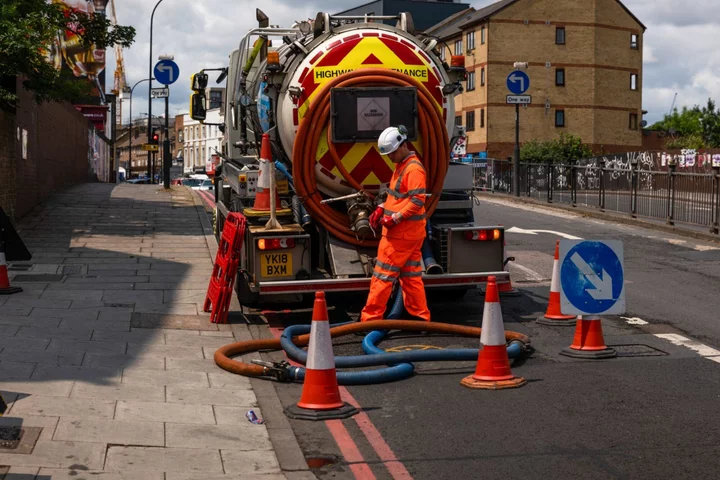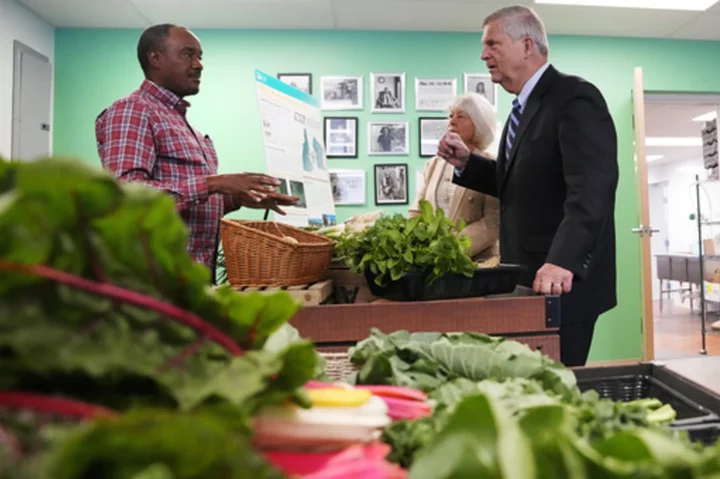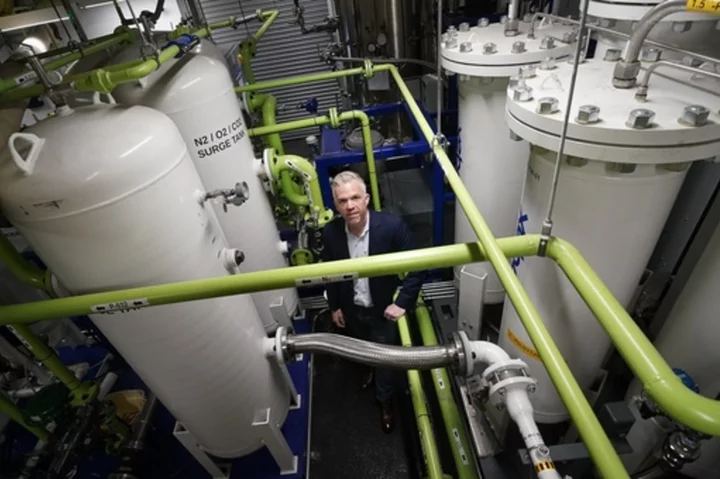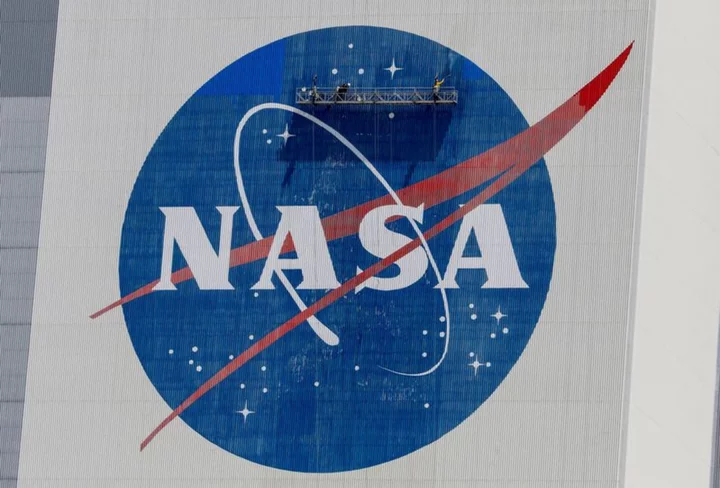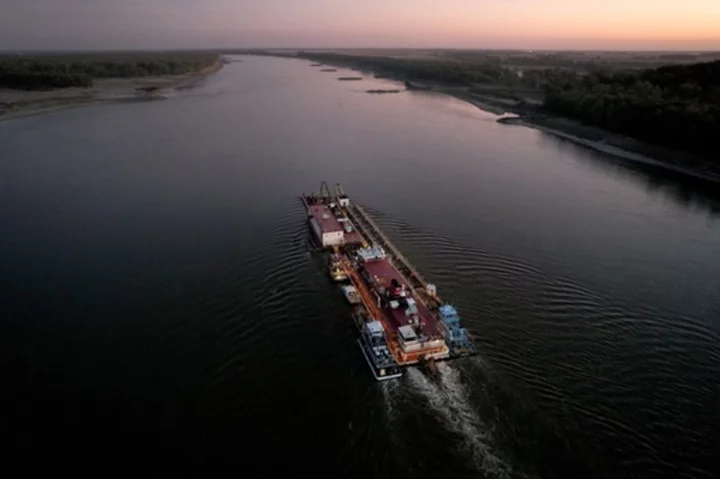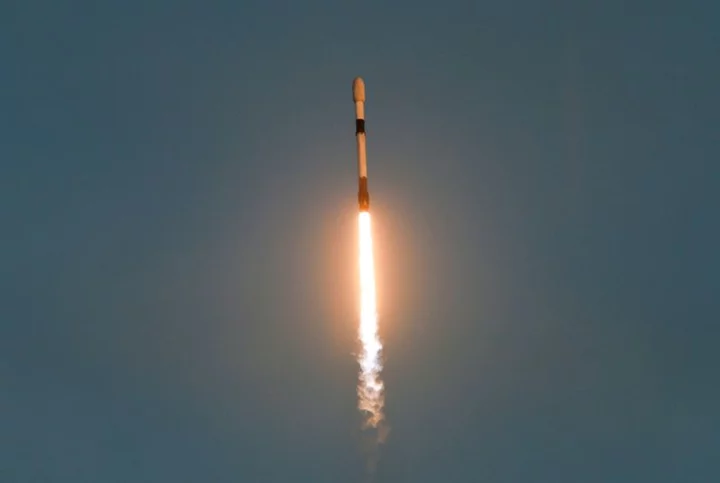Six months after becoming the chief executive at Shell Plc, Wael Sawan quietly ended the world’s biggest corporate plan to develop carbon offsets, the environmental projects designed to counteract the warming effects of CO2 emissions.
In an all-day investor event in June, Sawan laid out an updated strategy for the European oil major that included cutting costs and doubling down on profit drivers like oil and gas. As important was what he omitted: any mention of the company’s prior commitment to spend up to $100 million a year to build a pipeline of carbon credits, part of the firm’s promise to zero out its emissions by 2050.
Those goals for the offsets program have been retired, the company confirmed, along with the plan to harvest a whopping 120 million carbon credits annually by the end of the decade from projects that sequester carbon with trees, grasses or other natural resources, many of which Shell would develop itself. That would have accounted for about 10% of the company’s emissions. It hasn’t made public any new targets for developing offsets or specified how it now plans to deliver on its future climate commitments .
The pullback reflects both Sawan’s renewed commitment to the oil-and-gas business that generates most of Shell’s profits, and an admission that the prior goals were simply unattainable. Over the past two years, Shell barely made a dent. It spent $95 million, less than half of its initial budget, to build or invest in a portfolio of carbon projects from Western Africa to the Brazilian Amazon to Australian farmlands. They’ve generated few if any offsets, and Shell has struggled to find projects that meet its standards for quality.
It's a newly damning indictment of offsets, which have become an important if controversial “climate solution” for most big companies: Bloomberg New Energy Finance estimates the voluntary carbon market, which today totals around $2 billion today, could grow as high as $950 billion by 2037.
Until now, much of the criticism has focused on quality. Many investigations, including several by Bloomberg Green, have found that many offsets don’t deliver the environmental benefits they promise. Shell set out to solve that problem, with stringent requirements, deep pockets and more than a century of engineering expertise, and quickly learned that focusing on quality limited supply. It could have good offsets, or a lot of them, but not both.
“It’s really hard to get scale from high-quality credits,” said Giles Dufrasne, carbon policy officer at Carbon Market Watch. “The two forces”—volume and quality—“work against each other.”
Flora Ji, a 17-year Shell veteran, has run the company’s “nature-based solutions” operations since 2021. In an interview before Sawan scrapped the official, 120 million-offsets-per-year target, she said everyone knew it was a big number, a reach. Meanwhile, the carbon market hadn’t expanded rapidly enough to meet rising demand, she said. “It didn't have that kind of huge, exponential growth we expected.”
Ji declined to respond to further questions after Sawan announced the company’s new direction. A spokesman for Shell noted the company’s official position that “the increase in demand for carbon credits should be matched by the need for quality,” and went on to say that “we disagree that there is a mismatch between the need for quantity of carbon credits internationally and the ability for project developers to deliver on quality standards.”
Shell’s inspiration for building a robust pipeline of offsets came from a paper published by the Nature Conservancy in 2017. The environmental organization, which also develops and sells offsets, found that nature preservation and restoration could absorb more CO2 than previously thought, enough to play an important role in limiting global warming and for a price far lower than other proposed solutions.
That research, along with growing investor pressure on companies to reduce their carbon footprint, led Shell to look for a steady supply of offsets. Simply buying credits is fraught: Carbon projects are lightly regulated and controversial, and Shell’s core businesses already make it a popular target of environmental activists. Its nature-based solutions team wanted to avoid offering more grist for the mill.
“The only way to ensure you have sufficient supply of credits of the right quality at the right time and at an acceptable price is to have an in-house team and build your own supply pipeline,” said Anaïs Bach, former head of operations for TotalEnergies SE’s nature-based solutions business who now runs a carbon-focused startup. “This is more pressing for oil companies as there’s an underlying fear that carbon projects will be reluctant to work with them in the future.”
Shell hoped to surprise its critics, even those who have said its carbon projects are tantamount to “a dangerous scam.” The company began developing offsets in 2018 and, when it set its 120 million target three years later, it codified its quality criteria. It would take a conservative approach to estimated deforestation to ensure it wasn’t inflating the impact of protection. It would query the long-term management of a project long after credits are issued. It would fairly divide revenues with local partners and address questions about additionality, or whether Shell was taking credit for carbon reductions that would’ve happened anyway.
“The market didn't pay sufficient enough attention to quality back then,” said Shell’s Ji. “The quality, integrity and responsible use of credits: these are the prerequisites to the credibility and sustainability of the carbon markets.”
As one example of Shell’s approach, before it agreed to finance a 10,000-hectare reforestation effort in the Philippines, it interrogated the models being used by academics at Australia’s University of the Sunshine Coast to project the potential carbon mitigation of the project. Shell also conducted background checks on the leaders of the local organizations attached to the project, looking for signs of corruption or criminal activity.
“The level of that investigation reassured me that they were taking ethics and compliance very, very seriously,” said John Herbohn, director of the Tropical Forests and People Research Centre at USC and the coordinator for Project Tarsier. “That just sent to me a message that they were serious about doing things right.”
“If we were simply looking at maximizing the total number of credits, we would've done things differently,” he added, pointing to the decision to plant trees that are mostly native to the region, even though imported species would grow faster and start to store carbon sooner.
Shell and USC agreed on the terms of their partnership in 2022, almost three years after they began discussions; it took another six months to start planting trees. And Herbohn anticipates a maximum of 20% of total credits will be produced in the first decade, with the remaining offsets spread out over the following two decades.
There are “obvious and unavoidable structural obstacles” that limit these kinds of projects, said Rich Gilmore, chief executive officer at investment manager Carbon Growth Partners in Melbourne. “No matter how many people you have on this, how much money you invest or how high carbon prices go, you can't make trees grow any faster or soil microbes work harder.”
Shell’s Ji is not oblivious to these tensions. She said that nature-based projects can take anywhere between three to seven years to start issuing credits, depending on the underlying methodologies for carbon measurement.
That’s certainly true in the Scottish Highlands, where Shell has teamed with the government agency responsible for managing Scotland’s forests to plant over a million trees. In July, four years after the project was announced, Forestry and Land Scotland said it had validated and assigned to Shell nearly 27,000 of what it calls “pending issuance units,” a sort-of pre-credit. Each corresponds to the equivalent of one ton of CO2 sequestered from Scottish woodlands. After at least five years of monitoring, the corresponding carbon credits — 0.02% of its initial goal — will accrue to the company.
Other projects are also moving slowly. In Canada, a record heatwave scorched the seedlings in a tree-planting project. The process of acquiring and conserving land for credits in Brazil’s Amazon rainforest is arduous, slow and risky; it takes at least two years to generate offsets even after securing a plot. Projects in Spain and the Netherlands that Shell promotes on its nature-based solutions website are not issuing credits and will never do so, according to spokespeople for the projects’ developers.
In 2021, Shell said it aimed to spend $100 million on the effort, but invested about a quarter of that amount. Last year it spent $69 million, most of which went for a minority stake in Brazilian offsets developer Carbonext. Even if it had hit the target, that would equate to less than 1% of the company’s overall capital expenditure.
“We are probably one of the first to make an investment commitment to directly invest into nature-based projects as a private company in this arena,” Ji said. “Over time we learned all the challenges associated with that.”
Shell’s willingness to spend has opened doors. In 2019, Shell began discussions to fund mangrove restoration in Senegal. The project designer, Belgian non-profit WeForest, wasn’t initially comfortable working with Big Oil, but CEO Marie-Noelle Keijzer said there were few other viable options.
“There were no organizations we were aware of that would put up the millions of dollars it takes to do intensive planting at large scale without having any guarantees it will work,” said Keijzer. “Our goal is to restore ecosystems back to health. Shell was our only financial option to make that happen.”
Shell also funded research in the project area to track biodiversity impacts and installed equipment to measure the gaseous exchange between the growing mangroves and the atmosphere, to ensure the project doesn’t overstate its impact. The company will recoup its investments in kind: a share of an estimated 1.7 million credits over the life of the project, less than 2% of its now-defunct annual goal. The first credits are expected by 2025 at the earliest, said Keijzer.
Shell has also walked away from promising projects, even those that promised to quickly supply tens of millions of credits. It considered — and ultimately declined to take — a 38% stake in the Delta Blue Carbon project, a mangrove restoration effort in Pakistan that covers an area twice the size of London. The fundamentals were sound, Shell said, but it had concerns about the integrity of its local partners and the origins of the rights to the land.
A spokesperson for Indus Delta Capital, which runs the project, said shareholders and directors in the project have been subjected to rigorous due diligence and the process by which licenses and permissions were granted is “in line with the rules of business” prescribed by both the national and regional governments.
Not everyone shared Shell’s misgivings: Microsoft Corp. along with many large global corporations has retired credits from the project, according to registry data. A Microsoft spokeswoman said it asked Indus Delta Capital to abide by its supplier code of conduct when it bought credits last year and will review “salient project and developer information” before making any additional purchases.
Shell also broke with a Montana grasslands project that would sequester carbon through sustainable grazing techniques. The developer, Vermont-based Native Energy, planned to grant local ranchers the option to buy themselves out of the deal, which meant Shell couldn’t be certain how many credits it would receive, or if it had uncontested legal rights to them, both deal-breakers.
For Native’s part, chief executive officer Jeff Bernicke said it terminated discussions with Shell because “there was not a fit between their plan and Native's goals and values.” There was also a concern that the credits would be used to label fossil-fuels as carbon-neutral. A spokesman for Shell said the company has a robust due diligence process and it does not comment on specific projects or the contractual agreements.
Shell promotes some of its projects on its website, including the reforestation project in the Philippines and initiatives in Australia to increase carbon sequestration from soils. Others are kept secret, including a venture in the Peruvian Amazon that recently received the backing of indigenous leaders and an Indonesian forestry venture internally referred to as “Sun Bird.”
Secrecy is needed in part because the field is getting crowded. A growing group of companies, including oil industry peers BP Plc, Chevron Corp., Woodside Energy Group, Equinor ASA and Eni SpA, have also begun to build their own carbon-credit pipelines. It’s unclear whether they’ll try to grow as quickly as Shell had hoped to though.
French major TotalEnergies said earlier this year that after investments in forestry, regenerative agriculture and wetlands projects its stock of credits stood at just under 7 million at the end of 2022. It aims to accumulate 45 million credits by 2030, which would be just over a third of Shell’s now-obsolete goal.
Offsets, even of the highest quality, were never intended to be the only solution for Shell or anyone else. The Science-Based Targets initiative, a UN-backed agency that evaluates companies’ net-zero goals, recommends offsetting no more than 10% of emissions, and then only after making every other possible cut. Ji said that’s been Shell’s long-term approach, first to avoid emissions, then to reduce and finally to offset. “Shell’s sustainability and climate targets remain,” a company spokesman said.
Still, CEO Sawan has softened some of his predecessor’s environmental priorities. Along with ending the carbon offsets target, he eliminated a goal to increase power sales and vowed to be more selective with investments in renewable power, the backbone of the transition away from oil and gas. It also silently ditched a target to reach 500,000 EV charge points by 2025 and to have at least 10% share of global clean hydrogen sales.
“The company has flipped to the short-term focus, to profit maximization,” said Adam Matthews, chief responsible investment officer at the Church of England Pensions Board. “They're no longer aligned with trying to navigate the transition in the same way that we had previously perceived.”
In spite of what Matthews and others see as a significant shift, Shell has yet to adjust its long-term climate target of net-zero emissions by 2050. And Shell hasn’t abandoned its offsets efforts: yet its backup plan is revealing. Ji said the company can also use offsets it acquires on the market to bolster its supplies. And, of course, that exposes Shell to the lower-quality credits it was trying to avoid in the first place.
Author: Alastair Marsh, Will Mathis and James Herron


